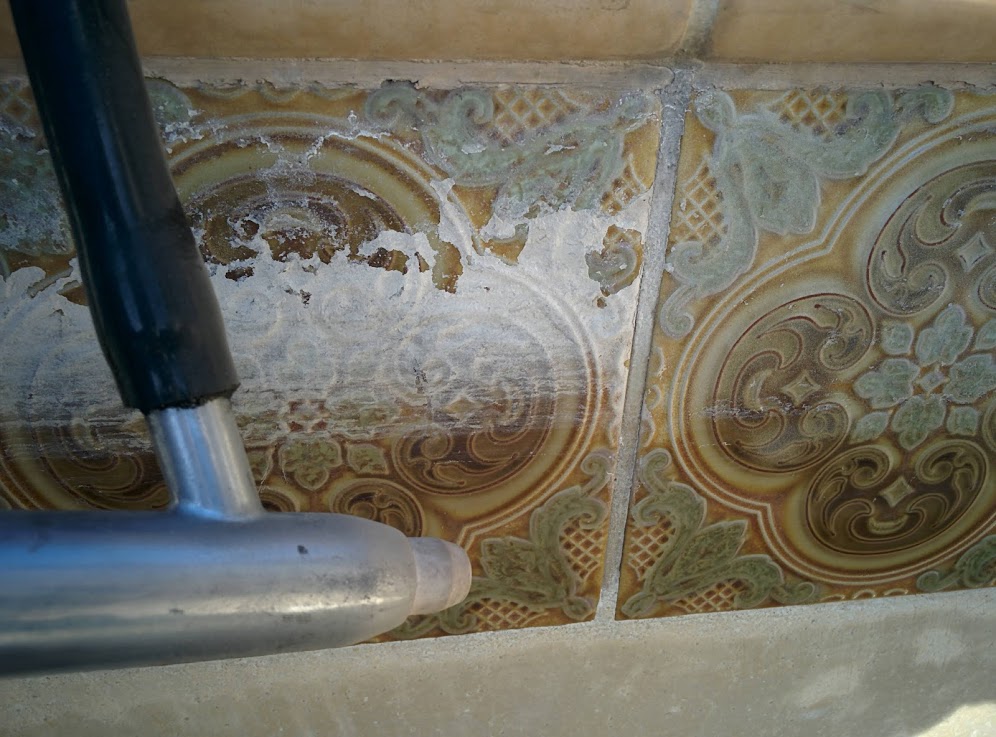ls99
Give me a museum and I'll fill it. (Picasso) Give me a forum ...
- Joined
- May 2, 2008
- Messages
- 6,506
Sump pump switch failed in closed mode. R&R
While screwing it on, I first drilled the holes in the wood so it wouldn't split, and drilled right into my finger that was holding the wood underneath
Boy did it bleed....
Three days later I sold the canoe on craigslist.
My finger is almost healed, pretty sure my fingerprint is different now.
I use the Band-Aid metric to rate repairs - E.G., 3 hours/2 Band-Aids.
I don't know if this qualifies as a repair, but I just removed heavy calcium build-up from my pool tiles with a $30 abrasive blaster from harbor freight. I paid $850 to do this work in 2013 and the quote this year was $1350 so I decided to try to do the work myself. The results were amazing. I posted a video on YouTube to demonstrate how it was done.
All of our Whirlpools, and Kenmore made by Whirlpool have been like that. Popping off the grill in front and vacuuming was easy... but not on the latest, which is a Whirlpool Gold high efficiency side-by-side, now about 10 years old I think. It says the coils do not need to be cleaned... yeah. They are positioned in this one as front to back banks of angled coils, like a sawtooth pattern. I can only vac the front bank, and maybe another bank in, before it's too deep to pull through with a vac. I have thought about using compressed air, but I wonder how much of a mess that will make.


The water dispenser quit working on the fridge. Last time it was a frozen hose, which I thawed by shooting hot water up the outlet using a tiny hose with a syringe. I tried and tried the same trick with no luck so I checked out the solenoid that controls the flow and found it to be OK, but I couldn't blow through the hose, so I knew it was plugged. Filter was relatively new and it worked fine yesterday - decided it could only be ice again. Doubled my efforts with the hot water trick and darned if a little chunk of ice and a rush of water did not come out the dispenser.
Good idea. I have not changed the setting in the last year, but maybe something is awry.Any chance your freezer is set too low ?
If you had a freezer thermometer you could check it.
Any chance your freezer is set too low ?
If you had a freezer thermometer you could check it.
Good idea. I have not changed the setting in the last year, but maybe something is awry.
One of my two stereo speakers has always sounded a little quieter than the other one. I looked at the two wires going into the back of the speaker, and one of them only has two strands of copper going into the connector. Out of about eight(?) total strands that comprise the that wire. I'm going to strip the end of that wire and get more strands, all eight, I guess, into the connector and give it a test and see if it gets louder. The other speaker, that is louder, already has all strands connected to its terminals.
I like to tin the leads. Keeps them nice and neat.
-ERD50
"Tin" means to put solder on the strands. Getting 8 strands conducting vs 2 won't make any difference.What does it mean to tin the leads? Wrap them in a metal foil?
What does it mean to tin the leads? Wrap them in a metal foil?
Out of about eight(?) total strands that comprise the that wire. I'm going to strip the end of that wire and get more strands, all eight, I guess, into the connector and give it a test and see if it gets louder. The other speaker, that is louder, already has all strands connected to its terminals.
"Tin" means to put solder on the strands. Getting 8 strands conducting vs 2 won't make any difference.
Little things like that can help.
I once sped up an older, slow computer by avoiding the use of full sized colons and only using semi-colons.
Having just 2 strands instead of all 8 for the last inch or two will not make a difference.
However, I wonder if this is an old wire that has the strands oxidized going way back under the insulation. When the strands are isolated from each other, in the worse case you have just two strands going the entire length.That's why marine wires have the strands individually tinned.
And then, the ends of the two connecting strands may also be oxidized, causing poor conductance onto the speaker terminals.
It is highly likely that the "weak" speaker has a problem. Or one channel of the receiver is itself "weak".
A test by swapping speakers will rapidly pinpoint the problem further.
PS. Even if the strands are oxidized and isolated from each other, by electrically joining them at the two ends by tinning you ensure that all the strands help to conduct current.
